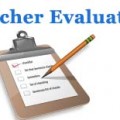
For the past two weeks, we have explored Charlotte Danielson’s Framework for Teaching evaluation tool in Domains 1 and 2 (Planning and Preparation and The Classroom Environment). Today, we will continue with ideas for being successful in Domain 3, Instruction. The following elements fall under this domain:
• Communicating with Students
• Using Questioning and Discussion Techniques
• Engaging Students in Learning
• Using Assessment in Instruction
• Demonstrating Flexibility and Responsiveness.
Obviously, this domain encompasses a lot of territory, but below you will find several suggestions that may enhance your ability to communicate clearly with students, use questioning effectively, and use assessment in instruction.
Communicating with Students
One way to communicate clearly with students is to connect “explanations to students’ interests and lives” (Framework, p. 59). One simple way to do this is to use interesting current events that students will relate to – and simply find intriguing.
A terrific resource is the website, NewsELA, and best of all, their basic site is free for teachers. With the increased emphasis in the Common Core on nonfiction text across the content areas, NewsELA is a wonderful resource to use with your students to get them reading nonfiction material, at their reading level (the articles are available on five different reading levels), and with topics that are timely and engaging. Plus, NewsELA has recently introduced a “sports” section, which no doubt will interest many students who love all things sports-related! For more information, check out www.newsela.com.
Using Questioning and Discussion Strategies
The Danielson model only includes questioning and discussion as an instructional tool, reflecting the importance of these strategies in the classroom (Framework, p. 63). Also, “high-quality questions encourage students to make connections among concepts or events previously believed to be unrelated and to arrive at new understandings of complex material” (Framework, p. 63).
One simple way to get students thinking on a higher level is to ask them (after a lesson), to complete an “exit slip” – a piece of paper in which they write responses and hand them to you as they exit the room. On this slip, you can provide two to three key terms from the lesson that may not appear to be related, and ask the student to use those words in a single sentence to demonstrate their understanding of the concepts. This forces students to think about ways the words relate – since they need to “fit it in” to a single sentence. It’s also a perfect formative tool to gauge how well students are synthesizing information that has been covered in class.
In an earlier blog, Socratic Seminar and You…Perfect Together, I presented ideas for engaging your students in meaningful discussions that utilize questions that require them to revisit the text to support their responses. This is yet another way to incorporate higher-level thinking into your classroom.
Using Assessment in Instruction
One aspect of meaningful formative assessment lies in the teacher’s ability to “weave monitoring of student learning seamlessly into the lesson, using a variety of techniques …[and elicit] evidence of student understanding” (Framework, p. 76). The aforementioned exit slips are just one way to quickly assess students’ level of understanding; here are several more ideas:
• Popsicle sticks: Use popsicle sticks with students’ names on them to call on students randomly (to ensure you call on students who don’t always raise their hands). Also, you can give students the popsicle sticks with their names on it, and at the end of a lesson or activity, ask students to place their sticks into a color-coded cup – red for “I don’t understand”, yellow for “I partially understand”, and green for “I understand this well!” You’ll get a quick snapshot of how students feel about what they are learning, and you can use this information when pulling flexible groups and planning future instruction.
• Whiteboards: Using whiteboards allows all students to respond quickly to teacher questions, and it’s an excellent way for the teacher to scan the room to see who’s “getting it”. For new concepts, you may wish to pair students so they can work together until they increase their confidence and understanding.
• Turn and Talk: Ask students a question, but instead of calling on students one by one, ask them to turn and talk to a partner. As they discuss the answer, you can circulate and listen in. This technique is an excellent one for shy students, because they will be more engaged and willing to share, knowing that they don’t have to speak in front of the entire class. Plus, you get to hear multiple students’ responses quickly, as opposed to only having time to call on and listen to one or two students (while having no idea what the rest of the class is thinking).
Of course, there are many more strategies that will enhance classroom instruction, but the ideas listed above are simple, requiring little time to set up and implement in your classroom immediately.
As always, please feel free to comment on any strategies and ideas that are working in your classroom. We’d love to hear your ideas!






Pingback: Making the Grade with Teacher Evaluation: Domain 3 | Think Educative
I think it will help my daughter